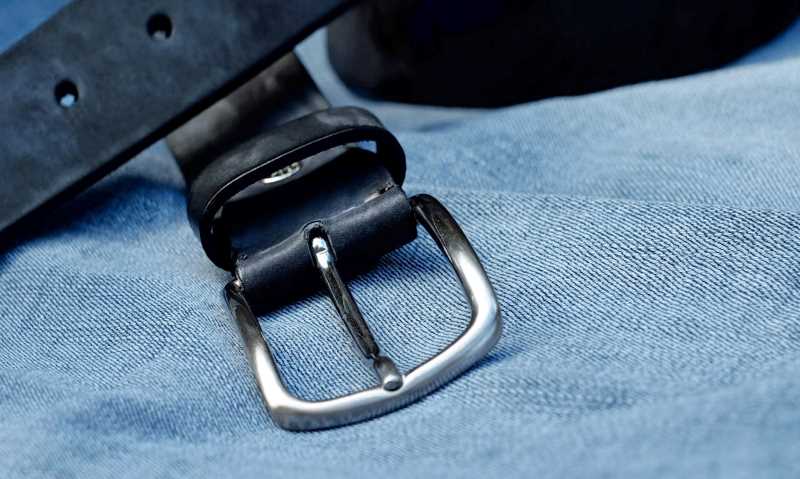
Looking After Your Leather Belt: The Ultimate Guide to Longevity and Care
|
|
Time to read 4 min
|
|
Time to read 4 min
A leather belt is more than just a functional accessory; it is a style statement and an investment that, when properly maintained, can last for years. However, many people overlook the importance of leather care, leading to premature wear and tear.
Whether you own a classic full-grain leather belt or a more casual suede option, understanding how to maintain it will keep it looking pristine for longer.
In this guide, we will walk you through the essential steps of leather belt maintenance to ensure its longevity.
Leather is a natural material that requires attention and care to preserve its durability and aesthetics. Without proper maintenance, your belt may dry out, crack, or become discoloured. Here are some key benefits of caring for your leather belt:
Before diving into maintenance, it is important to choose a high-quality belt. Opt for belts made from full-grain leather, as they are the most durable and develop a beautiful patina over time. Top-grain leather is also a good choice, offering a refined look with adequate longevity. Avoid synthetic leather belts, as they tend to wear out quickly and lack the same durability as genuine leather.
Cleaning your leather belt is an essential part of maintenance, ensuring it remains free from dirt, sweat, and oils that accumulate over time. Regular cleaning prevents premature wear and helps maintain the belt’s original look. Here’s a detailed guide on how to clean your leather belt properly:
Start by using a soft, dry cloth or a microfibre cloth to gently wipe the surface of the belt. This will help remove any dust, loose dirt, or debris that may have settled on the leather. Be sure to wipe both the outer and inner sides of the belt to prevent dirt build-up over time.
If your belt has visible stains or a buildup of sweat and oils, it’s time for a deeper clean. Use a mild leather cleaner or mix a small amount of gentle soap (such as baby soap or dish soap) with warm water. Dampen a clean cloth with the solution and gently rub the belt in circular motions. Avoid soaking the leather, as excessive moisture can cause it to stiffen or warp. Always ensure that you are using a cleaner specifically designed for leather to prevent damage.
After applying the cleaner, take a separate dry cloth and gently wipe away any remaining moisture. This step is crucial to prevent water from seeping into the leather and altering its texture. Never rinse the belt directly under running water or submerge it in liquid, as this can lead to severe damage.
Once cleaned, place the belt in a well-ventilated area to air dry naturally. Lay it flat or hang it on a belt rack to maintain its shape. Avoid exposing the belt to direct sunlight or using artificial heat sources like hairdryers or radiators, as these can cause the leather to become brittle and prone to cracking.
Once the belt is completely dry, use a clean, soft cloth to buff the surface in circular motions. This helps restore the natural shine and smoothness of the leather. If needed, you can apply a small amount of leather conditioner at this stage to keep the leather soft and supple.
Source: Pexels
Just like your skin, leather needs hydration to stay soft and supple. Leather conditioner helps replenish natural oils and prevents drying and cracking.
Conditioning should be done every three to six months, depending on how often you wear the belt and the climate conditions.
Proper storage prevents unnecessary wear and helps maintain the belt’s shape and quality.
Cracks occur when leather dries out due to lack of conditioning. To prevent this, ensure you condition the belt regularly and keep it away from excessive heat.
If your belt becomes too stiff, apply a leather softener or mink oil to restore its flexibility. Gently massage it into the leather and let it sit for a few hours.
If your belt gets wet, do not use a hairdryer or heater to speed up drying. Instead, pat it dry with a cloth and let it air dry naturally. Once dry, apply a leather conditioner to restore moisture.
Minor scratches can be buffed out using a soft cloth and leather conditioner. For deeper scratches, a small amount of leather dye may be required to restore colour.
A well-maintained leather belt can serve you for years, making it a worthwhile investment for any wardrobe. By following these leather belt care tips, you can prevent damage, preserve its aesthetic appeal, and ensure long-lasting durability.
With just a little attention and the right care routine, your belt will continue to look stylish and sophisticated for many years to come. So, why not start today and give your leather belt the care it deserves?
